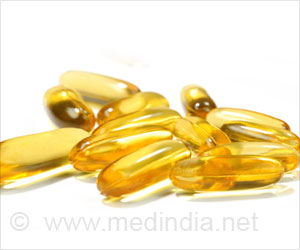Highlights
- If the rate of bone resorption, which is the process of breakdown of bone tissue by osteoclast cells, is not equal to bone formation, it can be detrimental to bone health in the long run.
- In pre-menopausal South Asian women, osteoclast cells break down bones at a quicker rate than that of reformation, making these women more susceptible to osteoporosis and fractures in later life.
- Women whose Vitamin D levels fluctuated throughout the year also had higher levels of bone resorption and bone loss than those whose levels remained consistent.
Bone resorption is a natural process which enables the transfer of calcium from bone tissue into the bloodstream. It is necessary to allow bone to adapt itself to challenges (e.g. change in a person's activity levels) and repair damage.
But if there is an imbalance between bone resorption and bone formation, overtime it can be detrimental to bone health.
Urinary N terminal telopeptide is a by-product of bone resorption found in urine. It helps to assess how much bone is being broken down. This by-product is found in higher levels in post-menopausal women.
The women were monitored for a period of 12 months and their urinary N terminal telopeptide levels were measured.
This indicates that in South Asian women pre-menopausal, osteoclast cells might be breaking down bones at a quicker rate than they are being reformed, making these women more susceptible to osteoporosis and fractures in later life.
Lead author of the paper, Dr Andrea Darling from the University of Surrey, said "When human bones break down at a quicker pace than what they can be re-formed, bone thinning may occur which can negatively impact upon a person's quality of life."
"What we have found is that pre-menopausal South Asian women have the same level of bone resorption as a woman who has been through the menopause. We need to investigate further whether these women simply have higher levels of both bone resorption and bone formation or if there is something more worrying occurring in their skeletal system, in terms of higher than expected bone resorption, increasing their susceptibility to bone diseases and fractures." Darling added.
Role of Vitamin D
The levels of Vitamin D of pre and post-menopausal participants were also examined during the study and its impact on bone resorption.
Main source of vitamin D is from sunlight. It helps to absorb calcium and phosphorus from food which is vital for bone health.
In the study researchers discovered that women whose Vitamin D levels fluctuated, those who had very high levels in summer but very low levels in winter, had higher levels of bone resorption than those whose levels remained consistent throughout the year.
Such fluctuation in Vitamin D levels was more prevalent among the white Caucasian women, which can be attributed to lifestyle choices line summer sunbathing.
In order to make levels of vitamin D more constant throughout the year, it is recommended that people might need to take a Vitamin D supplement during winter months only, if bone formation is low in those who have high levels of Vitamin D in the summer and low levels in the winter.
Dr Darling said "The fluctuation in Vitamin D levels in white Caucasian women living in the UK is not surprising as the level of sunshine we are exposed to varies with the season. What is surprising is how the oscillation of this vitamin may be detrimental to a person's bone health. Those who experience such a fluctuation in Vitamin D can stabilise their levels by taking a vitamin D supplement in winter only."
The new study is published in the journal Bone.
Reference
- Andrea Darling et al. Higher bone resorption excretion in South Asian women vs. White Caucasians and increased bone loss with higher seasonal cycling of vitamin D: Results from the D-FINES cohort study. Bone ; (2017) doi.org/10.1016/j.bone.2017.03.002
Source-Medindia
















